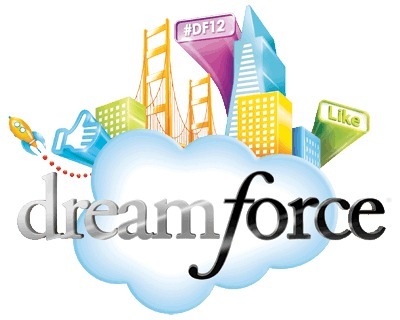Five Lessons From Dreamforce 2012
 It’s been a couple of weeks since Dreamforce ended, and in between client engagements and research I’ve had some time to digest the event — so I’d like to share some lessons from Dreamforce 2012:
It’s been a couple of weeks since Dreamforce ended, and in between client engagements and research I’ve had some time to digest the event — so I’d like to share some lessons from Dreamforce 2012:
1. If you build it they will come (no, really)
Setting a record for attendance at a vendor-led technology conference, Dreamforce 2012 was BIG. With over 90,000 attendees, it was hard not to be impressed by the logistical efforts taking place behind the scenes. Think of it … How do you feed 90,000 people in a couple of hours? Not to mention the enormous bandwidth issues for Wi-Fi and even 4G providers when you put this many social people together. Back when I was running marketing at a tech vendor, I was planning events based on how many square feet of conference space we would we need … the Salesforce team plans on a scale of how many conference centers will they need. This was an amazingly large event with very few crowd control issues. And the mobile app for the conference made everything much easier, despite occasional Wi-Fi outages. My hat’s off to the conference team at Salesforce for pulling this off.
2. Salesforce.com has adopted a business strategy which embraces social business
In 2009 I described a business transformed through social media as an S-Business. Since then we’ve become more familiar with “social business” and “Social Business Strategy” — even companies like IBM have fully embraced Social Business as business strategy. What I found inspiring about Marc Benioff’s marketing strategy was the way Salesforce showed the audience a vision of what a business transformed by social technologies looks like. And this vision was created by showcasing Salesforce customers such as GE, highlighting jet engines using social media to communicate directly with engineers, and Nissan Automotive USA showing cars communicating with drivers.
3. Tech Marketers: Promote your technology products by promoting your customers
As an ex-technology marketer, I admired the way in which Salesforce puts its customers front and center in every product promotion. Rossignol showed how a company might be transformed by Sales Cloud; and Australia’s largest bank, Commonwealth Bank, showcased the potential behind Marketing Cloud. In my opinion, too many technology companies still believe they can promote their products by simply highlighting features and benefits. In today’s complex world, tech marketers must make the complex simple by painting an easy-to-understand vision of a business transformed and focus on showing the business benefits through the eyes of the customer.
4. Great business leaders treat employees with respect
We’ve all heard stories of much-lauded CEOs who are seemingly inspiring while at the same time apparently being complete arses (AKA asses) to employees. It was so absolutely refreshing to see Benioff interview Sir Richard Branson on-stage and hear a leader who is at once endearing, humble, and inspiring. Sir Richard talked openly and candidly about topics as diverse as starting companies, leadership, the war on drugs, the Middle East, building great companies and space travel. I think what struck a chord with many attendees (based on Tweets) was how Branson conveyed so well that if you are serious about treating employees like family, it needs to be as hard to fire an employee as it would be to fire a brother or a sister. Some might see this as a failing — I see it as leadership based on understanding that a leaders role is to help employees find a place in the org where they can excel — nobody comes to work every day looking to fail. Branson is a man who always looks for the best in people. If you have not watched Sir Richard on YouTube I highly recommend it to you http://nigel.im/OGbeHJ.
5. CIOs need to embrace social business and marketing or be sidelined
I’ve been writing about social business for three years now so this should come as no surprise to my regular readers. But what was illustrated so clearly at Dreamforce was how significant an impact social business will have on the technology capabilities of the organization. As Sir Richard Branson put it, “for a business to not embrace social media…you’ve clearly got your head in the sand.” At Dreamforce, Salesforce also demonstrated a willingness to double-down on marketing technology. We’re coming close to the day when CIOs must either embrace a similar approach to enabling technology capabilities for marketing, or get out of the way. Marketing (understanding the customer and profitably delivering products and services to satisfy customers) and improving the customer experience are the pathways to future business success. If you don’t have marketing expertise in your IT team your team is woefully out of touch with today’s business.
Were you at Dreamforce (or wish you were) — what do you think?
Next post: Seek The Elusive Zone Of Disruption
Previous post: Will Amazon’s Deep Pockets Strangle Netflix?